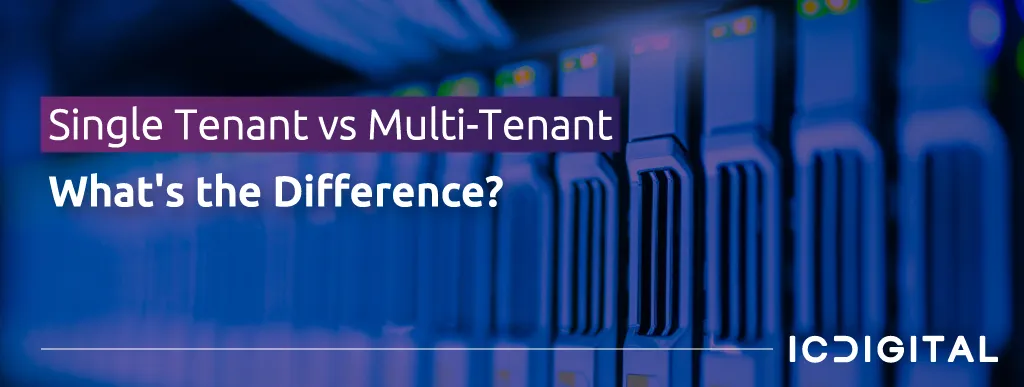
SaaS: Single Tenant vs Multi-Tenant - What's the Difference?

Let’s understand Single-tenant first.
Single-tenant architecture uses a software application and a database for each customer. This means each customer has their own instances of database and applications & they can’t share the database or application between them.
Potential benefits of single-tenant include:
- Security: Even if there is a data breach to a single tenant, another tenant will not have any security or privacy issues since their data will be stored in a separate instance of the data storage system.
- Customization: Since all of your business's data is separate, a large degree of customization is possible.
- Reliable: Single-tenant instances, as the name suggests, are isolated from other users. Since performance is based on only one instance, single-tenant instances are considered as reliable.
- Ease of migration: Single-tenancy also helps a business avoid the hassle and concern of relocating to another hosting environment that meets the same requirements.
Drawbacks of single-tenancy
With all the potential advantages to single-tenancy, it is still the less used option out of competing architectures, which could be due to some of its disadvantages. Drawbacks to single-tenancy include:
- Cost: Hosting one SaaS instance per customer can cost you more than multi-tenant.
- More Maintenance: Single-tenant environments updates and upgrades have to be managed individually for each customer hence it requires more maintenance.
- Inefficiency: Single-tenant SaaS doesn't make efficient usage of resources until it gets fully onboarded which makes it inefficient than multi-tenant SaaS.
What is Multi-tenancy?
Multitenancy means that multiple customers of a cloud/SaaS vendor are using the same computing resources. Despite the fact that they share resources, cloud customers aren't aware of each other, and their data is kept totally separate.
Potential benefits of multiple-tenant include:
- Lower cost: Per-user cost is lower in multi-tenant SaaS architecture because all resources are shared.
- Maintenance: Software upgrades and update maintenance are usually handled by SaaS companies and not by single users, because of this, multi-tenancies usually require less maintenance.
- Easy Onboarding: Multi-tenant software is architected for instant set-up and self-service configuration, which makes the onboarding process easy and user-friendly.
Drawbacks of multi-tenancy
- Security: As the same database is accessed by multiple users, it can lead to large scale vulnerabilities if a cyber attack occurs.
- Customization: Multi-tenancies offer fewer customization options, and users have less control over the quality of the environment.
- In-app disturbances: Databases are shared within a multi-tenant structure so if something happens to one tenant all tenant users get affected.
How to choose tenancy
Here are some questions to ask yourself while selecting SaaS architecture tenancy
- How much control do you need over the application environment?
- What’s your budget?
- Do you have robust in-house security expertise?
- How many users do you need to support for both the short and long-term?
Final thoughts:
For most businesses, multi-tenancy is a comfortable option. But Multi tenant vs single-tenant environments both have unique properties that make them great for a range of applications. Now that you know the pros and cons of single-tenant and multi-tenant systems, understand your business needs and select which one is right for your business.
A multi-tenant architecture also allows Digital Guardian to efficiently service all of its customers.
They can serve the needs of small companies, who may have lower computing resources and therefore require a shared service, also they serve the needs of larger enterprises that require access to more supply of computing power. The software development and maintenance costs of cloud services are shared among multiple tenants, driving down infrastructure costs and lowering customer expenses. Therefore Digital Guardian’s customers save money because they pay only for what they use!
